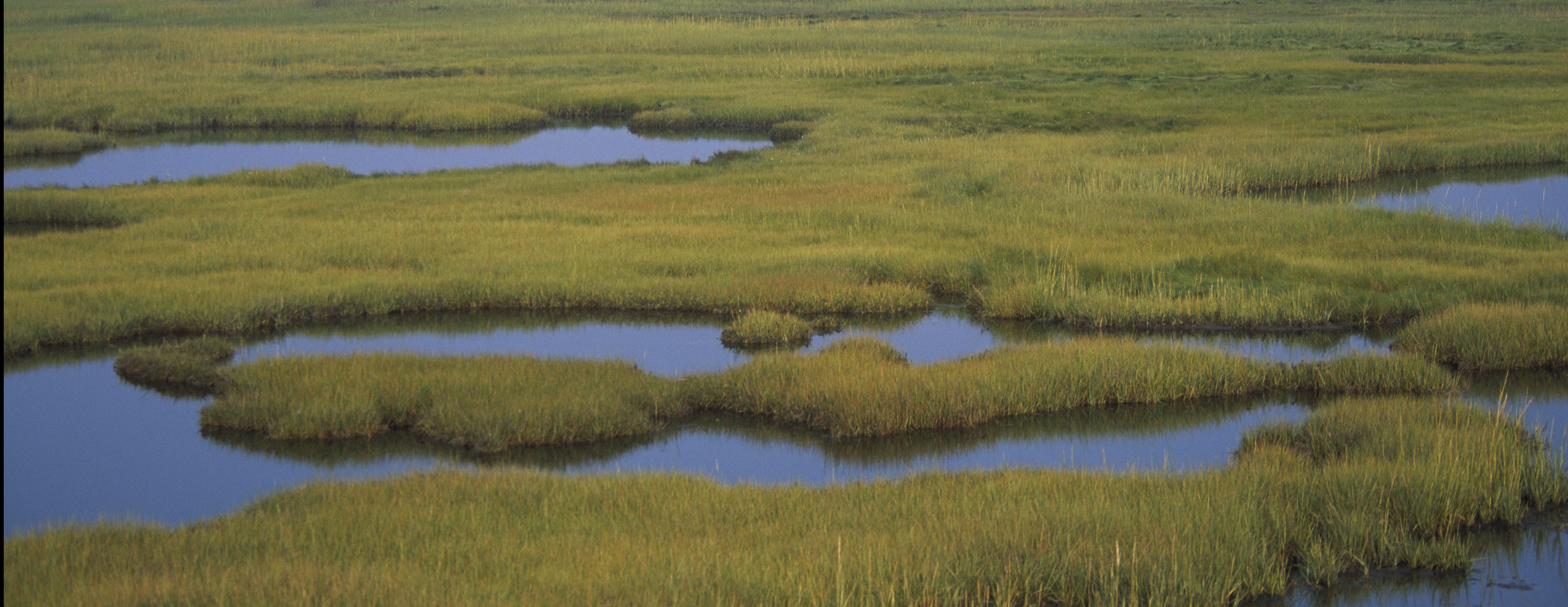The Chesapeake Conservation Partnership is pleased to welcome some new members to the steering committee and staff! Several are familiar faces, and they bring a wealth of knowledge and experience to our work toward meeting challenging conservation goals for 2025 and 2030.
The CCP is happy to introduce:
Jan-Michael Archer, Anthony Bobo, Katie Brownson, Louis Keddell, Anna Killius and John Wolf.
In addition, we’ll highlight how each new member of the team is working to accelerate equitable land conservation on the path to 30×30.
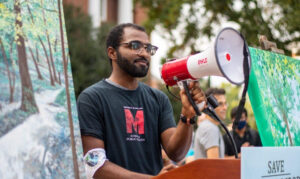 Jan-Michael Archer
Jan-Michael Archer
What are Jan-Michael’s goals while on the Steering Committee? Jan-Michael’s primary goal is to guide environmental policy – particularly in urban areas – toward practices that ensure green space equity and sustainability opportunities for low-wealth individuals within communities of color.
Jan-Michael Archer is an advocate of environmental justice with a background in wildlife ecology and urban/regional planning. His research focuses on Black communities’ disproportionate exposure to air pollution in urban and rural areas.
This work is designed to empower communities with the knowledge and skills needed to fight back against environmental injustice. Jan-Michael is also exploring best practices for developing multi-sector community science partnerships between community-based organizations, government agencies and academic institutions.
Jan-Michael also worked as shipboard education coordinator for the Living Classrooms Foundation teaching students (and other members of the public) about Chesapeake Bay ecology and history. He received his master’s degree in wildlife ecology and conservation from the University of Florida. His research interests include making ecological data more accessible to professionals in the built environment, using social media to connect urban citizens to natural resources and bridging equity gaps in science education.
He also has a bachelor’s degree in evolutionary biology from the University of Tampa. He is currently pursuing a Ph.D. in environmental health at the University of Maryland.
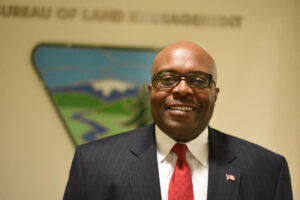 Anthony D. Bobo, Jr.
Anthony D. Bobo, Jr.
How will Anthony help accelerate watershed conservation efforts? As the new chair of the Chesapeake Bay Program’s Protected Lands workgroup, Anthony will be at the forefront of efforts to conserve an additional 2 million acres of watershed land by 2025.
Bureau of Land Management Eastern States Office Deputy State Director for Natural Resources Anthony Bobo helps lead efforts on public lands and their resources in the 31 states east of and bordering the Mississippi River.
In this position, he directs the state-level oversight and implementation of the minerals, planning, wild horse and burro management, recreation and other community resources. As a leader in the natural resources field for over 30 years, Anthony has led national public-private partnerships with diverse stakeholders, has been on the forefront of innovative technological efforts to benefit public lands and its users and serves in communities through mentoring, board representation and leading grassroots efforts.
He has a master’s degree from Johns Hopkins University in government and a bachelor’s degree in business management from Bowie State University. Anthony resides in Clinton, Maryland, where he enjoys spending time with his wife and two children fishing, traveling and playing board games.
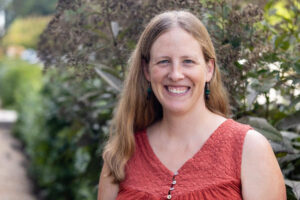 Katie Brownson
Katie Brownson
How will Katie advance the Partnership? In her role at USFS, she helps facilitate partnership efforts to advance forest restoration and conservation in the Chesapeake Bay watershed and is excited to help support the CCP’s 30×30 efforts.
Katie Brownson has been working as a watershed specialist for the United States Forest Service (USFS) State, Private, and Tribal Forestry at the Chesapeake Bay Program Office in Annapolis, MD since August 2019.
She completed her Ph.D. in May 2019 in integrative conservation and ecology at the University of Georgia (UGA). Her dissertation research focused on the social and environmental impacts of Payments for Ecosystem Services (PES) programs, primarily using PES programs in Costa Rica as case studies.
Before UGA, she worked for five years at Fungi Perfecti in Washington state, where she did research and development on ways to use fungi for removing contaminants from water and soil.
Outside of work, Katie enjoys cooking food, gardening, playing music and taking walks with her husband, Casey, her two boys, Jasper and Reed and dog Cocoa. She is lucky to live close to the Bay and has also started adventuring in the water via stand up paddleboard and canoe.
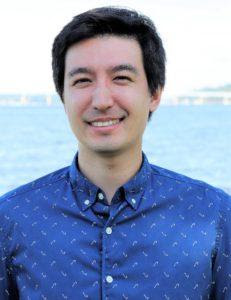 Louis Keddell
Louis Keddell
How will Louis help track and target conservation? Louis looks forward to applying his GIS training in large landscapes analysis to support CCP goals, promoting a healthy watershed and equitable access for all and future generations. In addition, he is developing numerous analysis datasets and tools to support regional and local partners with their on-the-ground conservation and restoration efforts.
Louis Keddell started supporting the CCP in Fall 2022. While he is not technically sitting on the steering committee, he will be providing and coordinating GIS support for CCP priorities. Louis currently serves as a geospatial program manager for the Conservation Innovation Center (CIC), which houses the geospatial team of the Chesapeake Conservancy. His geospatial work with the CIC over the past seven years has focused on precision conservation, supporting key partners and efforts throughout the Chesapeake Bay watershed to advance conservation and water quality goals.
Highlights of his work include helping to produce the first watershed-wide foundational high-resolution (1-meter) land cover dataset and influencing forest policy in Anne Arundel County, MD by providing mapping support for a high-resolution tree canopy change analysis.
Prior to joining Chesapeake Conservancy, Louis gained an appreciation for the power of GIS and remote sensing as tools to address many of the environmental issues our society is facing today. Growing up as a lifelong resident of both Virginia and Maryland, he has visited numerous green spaces and waterways while also witnessing unchecked rapid development.
Louis holds a master’s in geographical sciences from the University of Maryland, College Park and an undergraduate degree in geography from Virginia Tech. During his free time, Louis enjoys spending time outdoors with his wife and son.
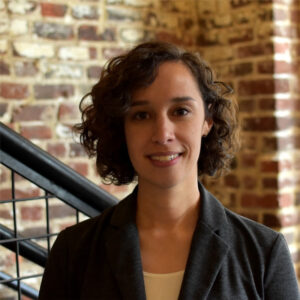 Anna Killius
Anna Killius
How will Anna lead the Chesapeake Bay Commission in conservation? Anna’s goal will be to work with Chesapeake Bay Commission members to help identify and promote policies to conserve the watershed’s important landscapes for the benefit of our communities, our wildlife, and our water.
Anna Killius was selected this year to be the Chesapeake Bay Commission’s executive director. She previously served as director of advocacy for the James River Association and legislative counsel for Congressman John Sarbanes of Maryland, where she advanced his leadership as co-chair of the congressional Chesapeake Bay Watershed Task Force.
Anna has held appointments to the Chesapeake Bay Citizens Advisory Committee and the Virginia Soil and Water Conservation Board. She is a 2021 graduate of the Virginia Natural Resources Leadership Institute. She received a juris doctor degree from William and Mary Law School, where she was a member of the first class of the Virginia Coastal Policy Center, and a bachelor’s degree in history from the University of Dallas with a concentration in applied mathematics.
The daughter of a naval officer and an elementary mathematics coach, Anna has enjoyed living and learning in communities throughout the Bay watershed and is proud to always call the Chesapeake home.
Anna’s selection as the commission’s executive director sparked an enthusiastic response from several other leaders in bay conservation. For example, as reported in the Chesapeake Bay Journal, Sarah Elfreth, chair of the Bay Commission, said, “Anna’s breadth of experience at the state and federal level working with policymakers to find common sense and bipartisan solutions for protecting the Bay, combined with a keen vision for the future of this work, will continue the legacy of accomplishment that has defined CBC.”
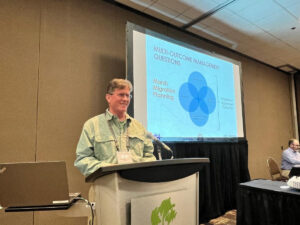 John Wolf
John Wolf
What tools and expertise does John bring to the table? John’s interests lie in developing user-friendly technology-based solutions to address Chesapeake conservation and restoration challenges. He is currently coordinating an effort to expand and enhance the use of geographic targeting tools to help accelerate progress toward goals and outcomes of the Chesapeake Bay Watershed Agreement.
John Wolf is the assistant director for land change research in the U.S. Geological Survey’s Lower Mississippi-Gulf Water Science Center and has served as the GIS team leader for the Chesapeake Bay Program partnership for 20 years. In this role, John collaborates with a group of talented geographers and geospatial analysts working to support land conservation and watershed restoration throughout the Bay watershed. John’s focus is on the development of web-based mapping and data visualization tools aimed at addressing science communication challenges.
Prior to coming to the Chesapeake Bay Program, John oversaw landscape analysis activities at the Maryland Department of Natural Resources. During this time, he helped to design and develop Maryland’s Green Infrastructure Assessment, one of the nation’s first statewide conservation design initiatives. He began his career working on private land protection projects with the Maryland Environmental Trust.
A native of Frederick, Maryland, John has bachelor’s degrees in biology from Western Maryland College and computer studies from the University of Maryland, a master’s degree in GIS from Penn State and a doctorate in information design from the University of Baltimore.
Lightning Update is a regular communication of the Chesapeake Conservation Partnership. Any opinions expressed are those of the authors and do not necessarily reflect positions of the Partnership or member organizations.
To share a success story, news, or important event, send your information to:
Support for the Chesapeake Conservation Partnership is provided by:
National Park Service Chesapeake
EPA Chesapeake Bay Program
USDA Forest Service
Pennsylvania Department of Conservation & Natural Resources
Maryland Department of Natural Resources
Virginia Outdoors Foundation
US Fish & Wildlife Service
Chesapeake Conservancy
The Chesapeake Conservation Partnership is co-convened by:




